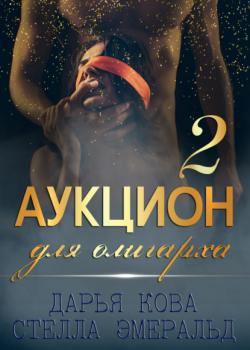Автор
Все книги издательства АвторJahrgang 1936 – weiblich
Barbara Schaeffer-Hegel hat als Professorin an Universitäten in Deutschland, Österreich und in den USA gelehrt. In den achtziger Jahren veranstaltete sie an der Technischen Universität Berlin und im Reichstag die ersten wissenschaftlichen Frauenkonferenzen in Deutschland; in den neunziger Jahren gründete sie die Europäische Akademie für Frauen in Politik und Wirtschaft, die EAF, und das Hochschulkarrierezentrum für Frauen, die Femtec. 2002 erhielt Barbara Schaeffer-Hegel das Bundesverdienstkreuz erster Klasse; 2011 wurde ihr vom Land Berlin die Louise Shroeder-Medaille verliehen. Barbara Schaeffer-Hegel, eine der führenden Gestalten der deutschen Frauenbewegung und als pragmatische Rebellin gleichzeitig deren Außenseiterin, ist Mutter von vier Kindern und Großmutter von acht Enkeln. Ihr Lebensbericht schildert mit bewundernswerter Offenheit die Ängste des Krieges, die sie erlebt hat, die Freuden und Wirren einer glücklichen Kindheit in einer süddeutschen Kleinstadt, und die darauf folgenden traumatisierenden Erfahrungen als junge Frau. In faszinierend fließender Sprache schildert Schaeffer-Hegel die Beschränkungen und Behinderungen, denen Frauen ihrer Generation ausgesetzt waren, und die sie am eigenen Leib schmerzhaft durchlitten hat. Ihr Lebensbericht schildert ein starkes Mädchen, eine in vielfacher Weise gebrochene junge Frau und wie diese sich gegen alle Widerstände und gegen die eigene Verzweiflung ins Leben und in eine für Frauen ihrer Zeit ungewöhnlich erfolgreiche Karriere zurückgekämpft hat. Schonungslos offen, auch gegen sich selbst, und zugleich voller Humor führt Schaeffer-Hegel uns durch ein Frauenleben, das überaus ungewöhnlich und doch für ihre Generation sehr typisch ist.
Аукцион для олигарха 2
Любовь… Ее достойны немногие. Такое хрупкое счастье, когда та самая Любовь обволакивает обоих, даже не взирая на то, как все начиналось. И что было причиной. Только даже самый вкусный торт может приестся, как и самая чудесная близость. Теперь Ире и Егору предстоит выяснить, на что Они готовы ради своей Любви…
Принц для простушки
Внезапное знакомство привело к мгновенной антипатии. Она нелепая до безобразия, но ведет себя не иначе, как королева. Что она о себе возомнила? А тут еще и друг детства задумал подначивать Илью. Мол, как она тебя уделала, а? Спорим, даст тебе отворот поворот, если только посмеешь к ней сунуться? Попробуй такую обломать! А вот и попробует – Илья с детства терпеть не мог, когда его брали на слабо. Он ее соблазнит, а потом отправит гулять лесом. Таких выскочек нужно наказывать, чтобы потом неповадно было. Но все ли получится так, как задумал Илья? Или план даст трещину…
Двенадцать Месяцев. Январь
Пришло время Января хозяйствовать над миром сказочным. И вновь потомки Дарины отправляют девушку, чтобы стала она Месяцу Спутницей верной, помощницей в делах его. Но что делать Милаве, если не хочет Январь помощи? Как быть, когда все ее планы рушатся под холодным взглядом Месяца, а над миром сказочным вновь нависает угроза? Правильно, не сдаваться!
Двенадцать Месяцев. Декабрь
В детстве нам всем рассказывали сказку о Двенадцати Месяцах. Послала злая мачеха бедную девушку за подснежниками, и это в зимнюю ночь! Девушка долго плутала по лесу, думая, что так и придет ее смерть. Совсем не ожидала она найти в этом дремучем месте братьев Месяцев… Так гласила история. Но что, если это – правда? Пусть давно перевернутая людьми и додуманная, но все же правда? Долгое время вход в сказочный мир был закрыт, страшная трагедия одного из братьев затворила сердца Месяцев на долгие годы. Но пришло время вспомнить забытые традиции и вернуть былое счастье. Настал тот час, когда спутники должны найти путь к замершим сердцам Месяцев.
Пари с последствиями
Если вас бросил парень – не убивайтесь долго. На вашей шее висит ипотека, а платить нечем – ерунда, не стоящая ваших нервов! Работы толком нет – вопрос времени, не нужно лить слезы. Все познается в сравнении – теперь я это точно знаю! Игорь Громов – бизнесмен, делец и очень опасный человек. Темная лошадка, про которого что только не говорят. Именно он сделал мне выгодное предложение. А потом и подбил на пари. Но могла ли я тогда знать, к каким последствиям все это приведет!
Чудовищная ошибка
Вы думаете, деньги решают все? Как бы ни так! Они еще больше ограничивают тебя. В 20 лет ты легкомысленна и веришь в любовь. Только папа с мамой ставят жесткий запрет на неподобающие отношения с парнем, которой не угодил лишь тем, что родился в бедной семье. Но я была слишком слаба, чтобы бороться за свои чувства… Я оставила его… до тех пор, пока не встретила через семь лет, когда уже ОН выкупал компанию моего отца… Только теперь он не столь благосклонен ко мне, а я… я все еще его люблю…
Ты будешь моей
Несколько лет назад я забеременела от любимого мужчины. Но он исчез из моей жизни, и мне пришлось пойти на обман, чтобы сохранить жизнь ребёнку. Я думала, что больше никогда не увижу бывшего возлюбленного. Но сейчас этот мужчина вновь появился в моей жизни, твёрдо заявив: «Ты будешь моей!»
Die innere Haltung
Die (d.i. Mira Alfassa) Mutter
„Das göttliche Leben zu führen hängt von keinerlei äußeren Tätigkeiten oder Umständen ab. Was du auch tust, von der höchsten bis hin zur gewöhnlichsten Arbeit, du kannst das göttliche Leben führen, wenn du das wahre Bewusstsein hast und die richtige innere Haltung einnimmst.“ (Die Mutter)
„Ein Sadhak sollte immer daran denken, dass alles von der inneren Haltung abhängt.“ (Sri Aurobindo)
Die hier zusammengestellten Textauszüge aus den Werken Sri Aurobindos und der Mutter gehen auf die Macht der richtigen inneren Haltung ein und zeigen die unterschiedlichen Geisteshaltungen auf, wie man sie im Hinblick auf das Leben einnehmen kann: Die innere Haltung des „Glaubens und Vertrauens“, der „Aufrichtigkeit“, des „Friedens und Gleichmuts“, der „Heiterkeit und Beharrlichkeit“, der „Dankbarkeit und Demut“, sowie die innere Haltung bei der Arbeit und wie man das Göttliche um etwas bittet.









